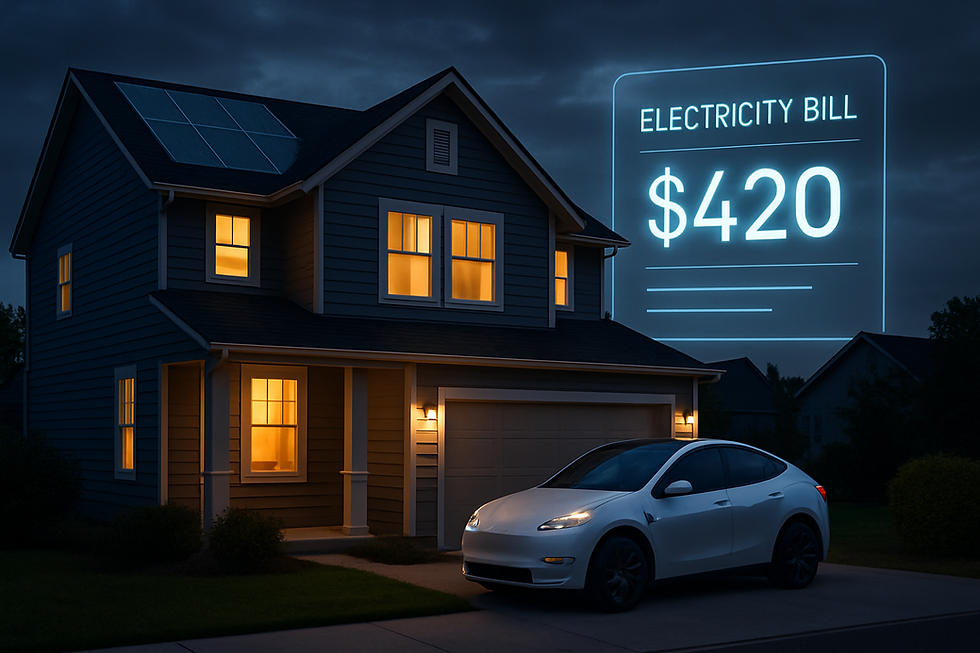What Are the Solar Incentives?
- IntegrateSun Company
- Aug 8, 2017
- 4 min read
Updated: Oct 30, 2024

Solar incentives are government programs designed to encourage homeowners to invest in solar energy. The federal government will pay home and business owners to install residential solar systems, using the Solar Investment Tax Credit (ITC). This tax credit is part of the movement to lessen the nation’s dependence on fossil fuels and offer alternatives for energy use. Solar energy helps individuals and the community, making it important for the common good. Therefore, the US government is willing to offer certain incentives to taxpayers who invest in solar energy.
The Solar Investment Tax Credit
The ITC offers a tax credit up to a certain percentage for each taxpayer who purchases a solar system. Both residential and commercial customers can use this tax credit, which applies to photovoltaic (PV) systems, solar heating and cooling, and other solar energy technologies. The credit system began with the Energy Policy Act of 2005, which made a 30 percent tax credit for commercial and residential energy systems for those installed between January 1, 2006 and December 31, 2007.
READY TO GO SOLAR AND SAVE ON YOUR ELECTRICITY BILLS?
Request a free home solar quote with one of our energy auditors today! >>
The Tax Relief and Health Care Act of 2006 extended the deadline for the 30 percent ITC through December 31, 2008. The same year, the Emergency Economic Stabilization Act extended by eight years the original ITC. It also eliminated the existing monetary cap on residential solar systems. The Omnibus Appropriations Act of 2015 extended the residential ITC through the end of 2023, with the percentage taxpayers can receive dropping by 4 percent every two years. The breakdown of ITC available is as follows:
Through December 31, 2019: 30 percent of cost.
Through December 31, 2020: 26 percent of cost.
Through December 31, 2021: 22 percent of cost.
After 2021, the residential ITC will drop to zero. However, the commercial and utility ITC will remain at 10 percent indefinitely. Commercial/utility installations may still qualify for 30, 26, or 22 percent ITC if placed in service before December 31, 2023. The credit applies to certain expenditures relating to the solar panel investment, including labor, parts, installation costs, and the cost of wires connecting the device to the home or commercial building. Since its implementation in 2006, the ITC has helped annual solar installation rates increase more than 1,600 percent.
State and Local Government Incentives
On top of federal tax incentives, you may be eligible to receive state, county, and municipal incentives for switching to sustainable solar energy. The Database of Sate Incentives for Renewables & Efficiency has the most up-to-date information on available incentives in every state and by zip code. There are currently 157 incentives available in the state of Texas and many more for Houston specifically. Here’s an overview of a few of them:
City of Houston Property Tax Abatement for Green Commercial Buildings. If you invest in one of the many types of solar energies listed for this credit on your whole building (or in “comprehensive measures”), you can receive one of four different levels of tax credits. These range from 1 to 10 percent.
Renewable Energy Systems Property Tax Exemption. This incentive is for commercial, industrial, and residential solar systems, including PVs, wind, solar heating, and solar thermal electric. Receive a 100 percent property tax incentive on the value the system added to your home or business if you use your system primarily for on-site energy needs.
There are dozens of other state- and city-specific incentives in Texas. Browse through the database to discover which you may be eligible to receive. Learning what incentives exist can help you choose your solar energy system, as one type may offer better rewards than another does. Remember, the cheapest system isn’t always the best choice when it comes to solar.
Performance-Based Incentives
Performance-based incentives (PBIs) give cash payments to citizens based on the number of kilowatt-hours (or BTUs) a renewable energy system generates. Several PBIs exist throughout Texas, including the CPS Energy-Solartricity Producer Program and PV incentive programs from Austin Energy. PBIs are a type of feed-in tariff that will credit your utility bills according to your PV system’s performance. This type of incentive rewards citizens for properly installing and maintaining their solar systems.
Other Incentives for Solar Energy
There may be other incentives for investing in solar available to you. For example, businesses may be able to write off the value of a solar system through the Modified Accelerated Cost Recovery System (MACRS). This system reduces the amount of taxes a business must pay and uses an accelerated depreciation system to give returns on investment sooner rather than later. You may also qualify for subsidized loans to fund your installation and tax exemptions in some municipalities that keep your property tax bill the same even if your property value increases because of a solar system.
If you are considering a residential solar system for your home, these tax incentives can lower costs and put you on your way to energy independence.




